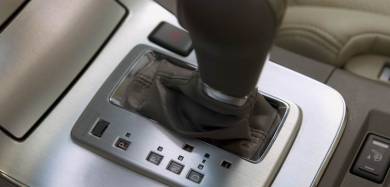In general, automatic transmissions are known as being more useful for lazy commuters than for hardcore racers. But it may be surprising for some to know that many pro drag-racing cars have heavy-duty auto gearboxes. That's because the brake-torque launch is an automatic specialty. 

This launch involves keeping the car stationary by flooring the brakes with the left foot, while using the right foot to rev up the engine against the torque converter. In technical terms, this preloads the entire drivetrain with the stress of a launch, allowing the engine to rev closer to its power and torque peaks at the starting line. Brake-torquing is also beneficial for turbocharged engines as it allows boost to build up before the launch, reducing turbo lag. The only problem is that there is a lot of stress on the transmission, and the consequent heat build-up can destroy your automatic gearbox. Unless your car has too much power for the tires to handle, a brake-torque launch usually will not spin the wheels. This is because the automatic transmission absorbs the shock by design, and brake-torquing actually reduces stress on the rest of the drivetrain. Instead of a sudden massive load, the drivetrain has the torque applied slower instead of one huge jolt.
If your car has power brakes, you could apply the brake-torquing technique even better. At the starting line, shift your auto gearbox into neutral and floor the brake pedal with your left foot. Rev the engine once and quickly get off the throttle. You will feel the brake pedal sink further to the floor. This greatly increases the braking force. Now shift back into gear. You will now be able to rev up the engine even higher against the torque converter.
The downfall of standard automatics is their easy-going nature while shifting, so you lose power during the actual race, where a manual would have allowed for more aggressive upshifts. However, the shift points of an automatic can be professionally modified for drag racing, and some new automatics even allow for manual shifting or have a sport setting for quicker gear changes. In fact, you could shift up through the gears even on most conventional automatics for a little more oomph

No comments:
Post a Comment